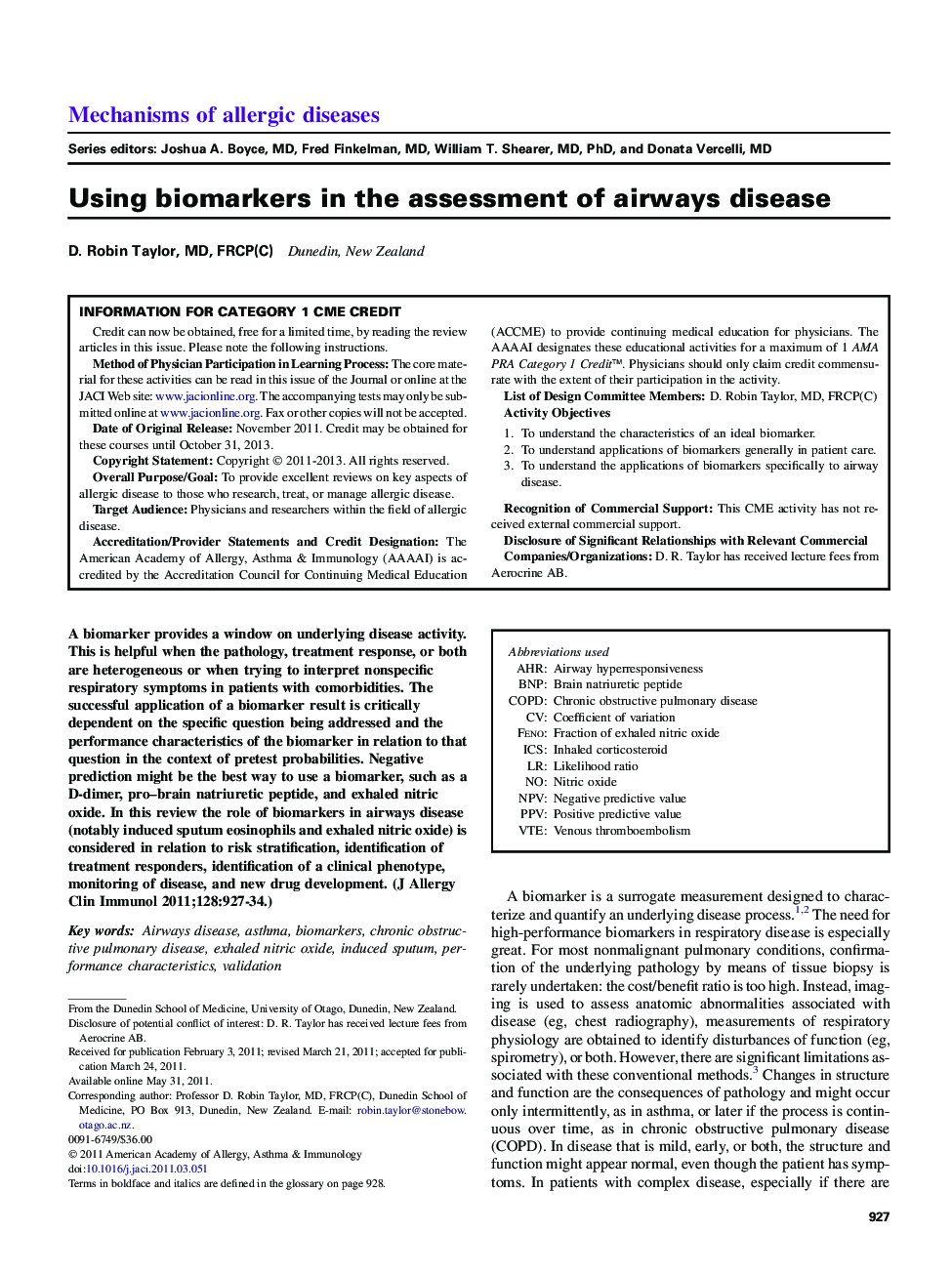| Article ID | Journal | Published Year | Pages | File Type |
|---|---|---|---|---|
| 3199175 | Journal of Allergy and Clinical Immunology | 2011 | 8 Pages |
A biomarker provides a window on underlying disease activity. This is helpful when the pathology, treatment response, or both are heterogeneous or when trying to interpret nonspecific respiratory symptoms in patients with comorbidities. The successful application of a biomarker result is critically dependent on the specific question being addressed and the performance characteristics of the biomarker in relation to that question in the context of pretest probabilities. Negative prediction might be the best way to use a biomarker, such as a D-dimer, pro–brain natriuretic peptide, and exhaled nitric oxide. In this review the role of biomarkers in airways disease (notably induced sputum eosinophils and exhaled nitric oxide) is considered in relation to risk stratification, identification of treatment responders, identification of a clinical phenotype, monitoring of disease, and new drug development.
